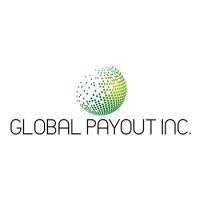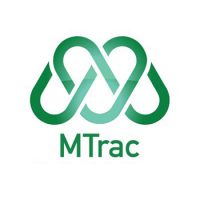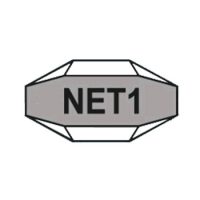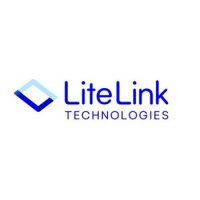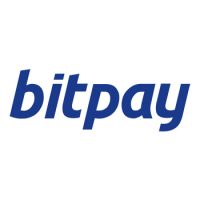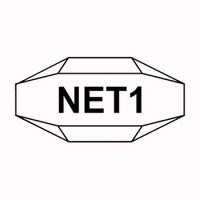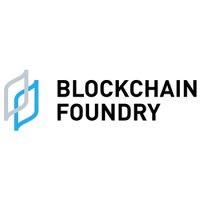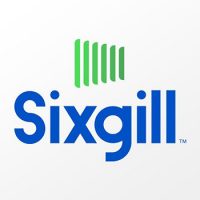Blockchain
Epazz DeskFlex Desk & Room Booking System: Unveiling of the Contactless FlexCube Device Version 2.0 for Return to the Office After COVID-19 Lockdowns
DeskFlex is a great solution to manage social distancing at the office
Chicago, Illinois–(Newsfile Corp. – July 16, 2020) – Epazz Inc. (OTC Pink: EPAZ), a leading provider of cloud-based business software solutions, announced today the launching of a new version of the FlexCube device for On-Demand workspaces. DeskFlex FlexCube is a cutting-edge office management solution that allows employees to book desks, cubicles, or workstations. DeskFlex is a great solution to manage social distancing at the office. It displays the accurate actual status of the specific workstation. The device shows off led lights of different colors to indicate the state of the preferred desk. Green indicates available workspaces; Red suggests reserved space, Yellow shows the area is going to open in a few minutes, and Blue indicates the desk has a permanent user.
Using the downloadable DeskFlex mobile app, the employee scans the QR code for verification of any reservation. FlexCube is the quickest way to book workspace on demand when employees want to know available desks right away. The Check-in and Check-out features maintain that the reservation is in use. DeskFlex FlexCube v2.0, the newest version of the FlexCube, comes with an interactive touchscreen interface that allows employees to check-in, check out, view reservations, and book the space on the dot with just a swipe of a finger. It performs all the features in the older version but faster and more integrated.
DeskFlex desk booking software remains the leading provider of room scheduling system to law firms, financial institutions, hospitals, and branches of the government here and abroad. DeskFlex receives an increasing trend of product inquiries and demo requests following the lifting of lockdown measures. Work-from-home employees are now gearing up to go back to the office. DeskFlex company prepares to accommodate more organizations as they adopt and integrate room booking software in their existing company network following the new normal of doing business.
According to Shaun Passley, Ph.D., CEO of Epazz, Inc., “We are excited to be releasing FlexCube. It is a great product for organizations that are transforming their static office into an open office. Allowing employees to select which desk to seat each day for easier check-in and check out. Great for college computer labs or exam offices.”
About DeskFlex.com
DeskFlex is a desk booking solution and room reservation software for conference rooms, workspaces, desks, car parking spaces, equipment, hoteling, and HotDesking, which helps office managers accommodate the occasional needs of mobile workers while reducing rent and facility costs. DeskFlex lets employees reserve space in advance or claim desks right away. It adjusts the telephone switch (PBX), so calls ring at the “desk du jour.” DeskFlex includes check-in, point-and-click floor maps, a web browser, a local kiosk, Outlook integration, and conference room scheduling.
About Epazz, Inc. (www.epazz.com)
Epazz, Inc., is a leading cloud-based software company that specializes in providing customized cloud applications to the corporate world, higher-education institutions and the public sector. Epazz BoxesOS™ v3.0 is a complete web-based software package for small- to mid-size businesses, Fortune 500 enterprises, government agencies, and higher-education institutions. BoxesOS provides many of the web-based applications organizations would otherwise need to purchase separately. Epazz’s other products are K9Sky.com kennel software and Provitrac applicant tracking system.
SAFE HARBOR
This is the “Safe Harbor” statement under the Private Securities Litigation Reform Act of 1995: certain statements contained in this press release are “forward-looking statements” within the meaning of the Private Securities Litigation Reform Act of 1995. Forward-looking statements can generally be identified by the use of forward-looking words such as “may,” “expect,” “intend,” “estimate,” “anticipate,” “believe,” and “continue” (or the negation thereof) or similar terminology. Such forward-looking statements are subject to risks, uncertainties, and other factors that could cause actual results to differ materially from future results or those implied by such forward-looking statements. Investors are cautioned that no forward-looking statement is a guarantee of future performance and that actual results may differ materially from those contemplated by such forward-looking statements. Epazz, Inc., assumes no obligation and has no intention of updating these forward-looking statements, and it has no obligation to update or correct information prepared by third parties that is not paid for by Epazz, Inc. Investors are encouraged to review Epazz, Inc.’s public filings on SEC.gov and otcmarkets.com, including its unaudited and audited financial statements and its OTC markets filings, which contain general business information about the company’s operations, results of operations, and risks associated with the company and its operations.
CONTACT: For more information, please contact
Investor Relations
[email protected]
(312) 955-8161
www.epazz.com
Blockchain
Blocks & Headlines: Today in Blockchain – May 14, 2025

Blockchain’s evolution continues at breakneck speed, shifting from niche applications into mainstream finance, supply-chain integrity, and social impact initiatives. Today’s briefing spotlights five stories that illustrate this maturation: Cardano’s seamless asset integration in the privacy-focused Brave browser; a strategic partnership between Cokeeps and Maybank Trustees to bring tokenized wealth management to institutional clients; Ripple’s leadership framing blockchain as the dismantler of traditional banking silos; the UNDP’s pilot using distributed ledgers to improve HIV treatment tracking across Eurasia; and a novel IoT-blockchain collaboration to authenticate fine wines end-to-end. In this op-ed–style roundup, we analyze not only the mechanics of each announcement but also their broader implications for Web3’s scaling, DeFi’s credibility, and blockchain’s social-good potential.
1. Cardano Integrates Native Blockchain Assets into Brave Browser
What Happened
On May 13, Cardano foundation engineers unveiled a collaboration with Brave Software to natively support Cardano blockchain assets—ADA tokens and native tokens—within Brave’s wallet panel. Users can now view balances, send ADA, stake directly, and interact with back-end metadata for Cardano NFTs, all without leaving the Brave interface. This move follows Brave’s earlier Ethereum and Solana integrations, signaling a multi-chain future for privacy-centric browsers.
Analysis & Implications
-
User Experience Leap: By embedding Cardano functionality at the browser level, Brave eliminates friction for onboarding new users who would otherwise juggle external wallets or browser extensions. Easier access to staking and NFT markets could drive stronger engagement for Cardano’s ecosystem.
-
Multi-Chain Convergence: Brave’s strategy underscores the shift from siloed blockchain apps toward unified, chain-agnostic user experiences. As Web3 users demand seamless access across protocols, wallets and browsers will compete to offer the most inclusive multi-chain dashboards.
-
Cardano’s Market Position: For Cardano, this integration is a validation of its low-fee, high-throughput value proposition. While Ethereum remains dominant in DeFi and NFTs, Cardano’s energy efficiency and growing dApp roster may attract users seeking alternatives—especially if wallet UX barriers continue to fall.
Opinion
Brave’s embrace of Cardano assets exemplifies the coming era of “wallet-agnostic” access, where the browser becomes the front door to multiple blockchains. For Cardano, it’s a critical trust signal that boosts on-ramps and could accelerate liquidity in its DeFi protocols. Yet success hinges on robust in-browser security and responsive UI design—any wallet bugs or performance lags will erode the trust this collaboration seeks to build.
Source: CoinDesk
2. Cokeeps & Maybank Trustees Develop Blockchain Asset-Management Solutions
What Happened
Malaysia’s Cokeeps, a digital-asset custody pioneer, has partnered with Maybank Trustees to design and deploy tokenized asset-management platforms for institutional investors. The joint solution leverages a permissioned blockchain to record ownership of tokenized bonds, real-estate funds, and alternative-assets, while integrating smart-contract–driven compliance checks and real-time audit trails.
Analysis & Implications
-
Institutional Adoption: By combining Cokeeps’s custody technology with Maybank’s regulatory expertise and trustee services, the duo addresses two perennial barriers to institutional crypto investment: custody risk and compliance certainty. This model could serve as a blueprint for other Asia-Pacific custodians.
-
Tokenization Benefits: Tokenized securities on a shared ledger can reduce settlement times from days to seconds, lower transaction costs, and open fractional-ownership models—broadening access to asset classes historically reserved for high-net-worth individuals.
-
Regulatory Alignment: Embedding KYC/AML logic into smart contracts ensures that every token transfer automatically enforces jurisdictional rules. As regulators worldwide demand transparent on-chain auditability, such integrated controls will become table stakes for institutional offerings.
Opinion
This collaboration exemplifies how established financial institutions can embrace blockchain without ceding control. Rather than disrupting Maybank’s trustee role, tokenization enhances it—transforming trustees from manual record-keepers into guardians of programmable assets. The real test will be scale: can the platform handle high-volume trading with uncompromised security and consistency? If so, we may see a wave of legacy banks repackaging their services through blockchain rails.
Source: The Star
3. Ripple Board Member: “Blockchain Is Unbundling Banks”
What Happened
On May 14, Stuart Alderoty, a board member at Ripple Labs, declared in an industry webcast that blockchain technology is fundamentally “unbundling” traditional banking services—payments, settlements, custody, and compliance are each evolving into modular, chain-native offerings. He argued that banks will increasingly source best-of-breed infrastructure from fintech and blockchain providers rather than maintain monolithic, in-house systems.
Analysis & Implications
-
Modular Finance: Alderoty’s vision anticipates a composable finance ecosystem: banks orchestrate various on-chain services—liquidity pools, cross-border rails, automated KYC—via APIs, akin to how e-commerce platforms integrate third-party payment gateways and fraud-prevention tools today.
-
Competitive Pressure: Incumbent banks face competition not only from neobanks but also from protocol-level service providers (e.g., on-chain oracles, decentralized exchanges). To retain clients, banks must either build or partner to offer seamless, blockchain-enhanced products.
-
Industry Collaboration: Ripple itself underscores this shift: its On-Demand Liquidity service unbundles foreign-exchange and settlement from legacy correspondent banking, delivering real-time cross-border payments at reduced cost.
Opinion
The unbundling thesis places a premium on interoperability and standards. Without common protocols, financial services risk siloed “rails” that mimic today’s fragmented SWIFT-based processes. Collaborative industry consortia—like the U.K.’s Project Rosalind or Japan’s mHUB—will be crucial to define shared messaging formats and governance frameworks. For blockchain to truly disaggregate banking, ecosystem players must coalesce around open, secure standards.
Source: U.Today
4. UNDP’s Big Ideas: Using Blockchain to Fight HIV in Eurasia
What Happened
The United Nations Development Programme (UNDP) launched its “Big Ideas” pilot in Eurasia, deploying a blockchain-enabled platform to manage HIV treatment data across multiple countries. The solution uses a hybrid public-private ledger to ensure patient anonymity while providing authorized clinics and NGOs with secure, immutable access to treatment adherence records and drug-dispensation logs.
Analysis & Implications
-
Data Privacy & Integrity: The hybrid architecture combines zero-knowledge proofs on a public chain—verifying treatment events without exposing personal health information—with a consortium chain that controls participant permissions. This dual model balances transparency and confidentiality.
-
Cross-Border Collaboration: HIV programs often span regions with varying healthcare regulations. A shared blockchain registry simplifies data exchange, reducing duplication and ensuring each patient’s history is up to date, even when they move between clinics or countries.
-
Scalability & Sustainability: Running on energy-efficient proof-of-stake networks and leveraging off-chain data storage for sensitive medical records, the platform minimizes transaction costs while maintaining high throughput—essential for scaling across thousands of patients.
Opinion
UNDP’s blockchain pilot represents a maturation of social-impact use cases—from proof-of-concepts to production-grade systems. By prioritizing patient privacy and regulatory alignment, this model could extend to other health-data challenges, such as vaccine distribution or epidemic tracking. The key will be forging long-term partnerships between multilateral organizations, local health authorities, and blockchain providers to sustain and expand the network beyond the pilot phase.
Source: UNDP
5. Identiv, ZaTap & Genuine Analytics Digitally Authenticate Fine Wines
What Happened
Identiv, ZaTap, and Genuine Analytics have unveiled a joint solution that employs specialized IoT tags and blockchain to verify the provenance of fine wines. Each bottle is fitted with a tamper-evident sensor that records temperature, humidity, and location data onto a permissioned ledger. Consumers can scan an NFC-enabled label to view the wine’s end-to-end history—from vineyard pressing to cellar aging and global shipping.
Analysis & Implications
-
Counterfeit Mitigation: The fine-wine market suffers from widespread fraud, with counterfeit bottles estimated to comprise up to 20% of high-end sales. Immutable provenance records and sensor-backed condition reports significantly raise the bar for authenticity verification.
-
Consumer Trust & Engagement: Beyond security, the solution enhances the collector experience—buyers gain confidence in their purchase and a richer narrative around each vintage’s journey, potentially commanding higher resale values on secondary markets.
-
Cross-Industry Potential: This IoT-blockchain fusion can be adapted for other luxury goods—artworks, haute horlogerie, or premium spirits—where provenance and condition are paramount.
Opinion
By blending real-world data streams with ledger immutability, this collaboration exemplifies blockchain’s most compelling value proposition: trusted digital twins of physical assets. However, the system’s integrity depends on robust IoT security—if sensors are spoofed or tampered with, the chain of trust breaks. Stakeholders must therefore enforce secure tag provisioning, periodic audits, and tamper detection measures to uphold the solution’s credibility.
Source: PR Newswire
Conclusion
Today’s blockchain dispatch underscores a pivotal shift: decentralized ledgers are weaving into the fabric of finance, social impact, and supply-chain integrity. From Brave’s browser-level Cardano support to tokenized asset platforms, from the unbundling of banking services to health-data pilots and luxury-goods authentication, blockchain is proving its versatility and maturing beyond speculative markets. As on-chain and off-chain worlds converge, interoperability, security, and standards will determine which projects scale and which falter. For stakeholders across Web3, DeFi, and enterprise IT, the imperative is clear: embrace modular architectures, uphold rigorous governance, and focus on real-world value—only then will blockchain realize its promise of trust, transparency, and transformative efficiency.
The post Blocks & Headlines: Today in Blockchain – May 14, 2025 appeared first on News, Events, Advertising Options.
Blockchain
Investview, Inc. (“INVU”) Reports Financial Results and Current Operational and Financial Highlights for the First Quarter Ended March 31, 2025
Blockchain
CapitalRevo Reveals Powerful AI-Driven Features Ushering in a New Era of Smart Trading

CapitalRevo AI
-

 Blockchain Press Releases6 days ago
Blockchain Press Releases6 days agoHTX and Justin Sun Launch $6M Mars Program Special Edition, Offering One User a Historic Space Journey
-

 Blockchain6 days ago
Blockchain6 days agoBitget Blockchain4Youth sostiene l’innovazione del Web3 e dell’IA all’hackathon “Build with AI” di Google Developer Group
-

 Blockchain6 days ago
Blockchain6 days agoBlocks & Headlines: Today in Blockchain – May 9, 2025 | Robinhood, Solana, Tether, China, Women in Web3
-

 Blockchain Press Releases5 days ago
Blockchain Press Releases5 days agoBybit Surpasses 70 Million Users, Reinforces Commitment to Transparency and Institutional Growth
-

 Blockchain2 days ago
Blockchain2 days agoBlocks & Headlines: Today in Blockchain – May 12, 2025 | Rootstock, Zimbabwe Carbon Registry, Fastex, 21Shares, The Blockchain Group
-

 Blockchain Press Releases6 days ago
Blockchain Press Releases6 days agoMEXC Lists USD1, Accelerating Global Stablecoin Innovation with World Liberty Financial
-

 Blockchain Press Releases2 days ago
Blockchain Press Releases2 days agoBybit Introduces BOB to P2P: Bolivian Traders Can Now Buy, Sell in Local Currency and Earn Commissions
-

 Blockchain Press Releases2 days ago
Blockchain Press Releases2 days agoBullish partners with the Gibraltar Government and GFSC to pioneer world’s first crypto clearing regulation
















